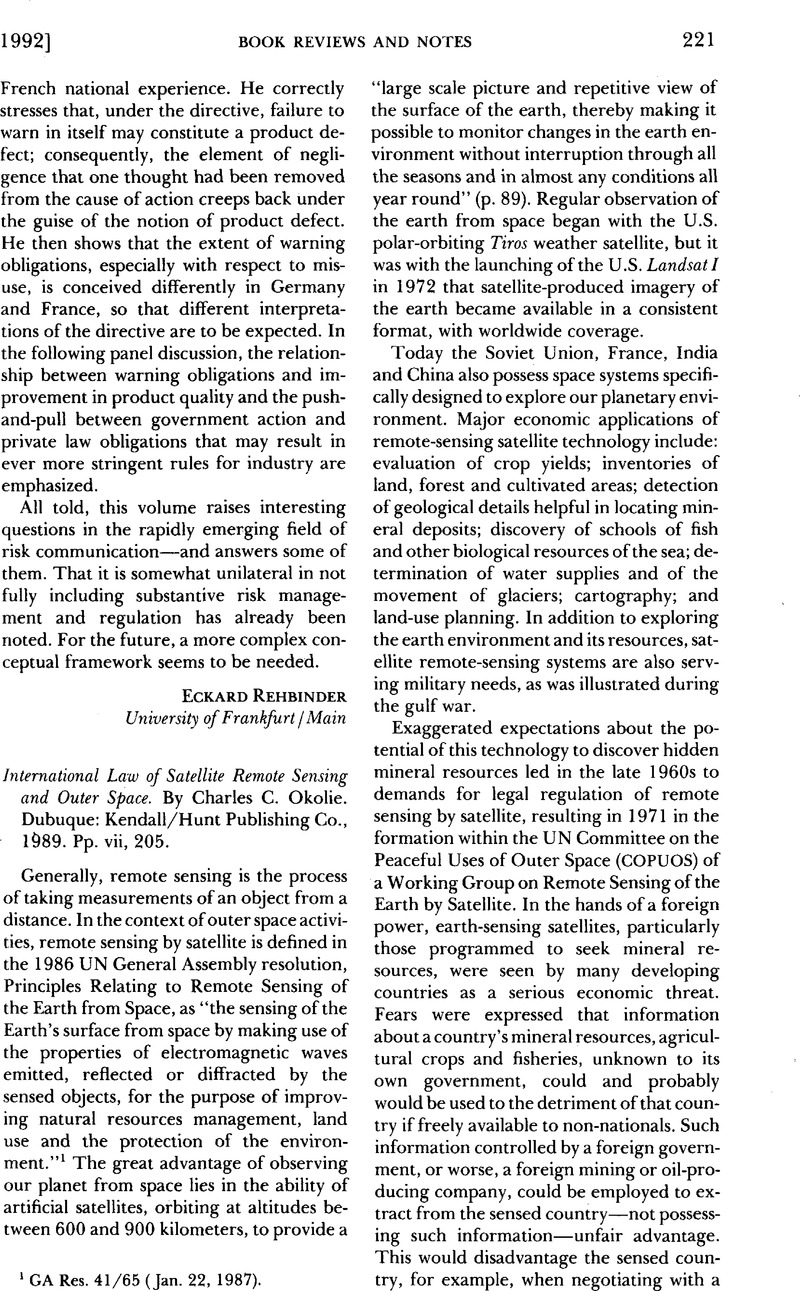No CrossRef data available.
Article contents
International Law of Satellite Remote Sensing and Outer Space. By Charles C. Okolie. Dubuque: Kendall/Hunt Publishing Co., 1989. Pp. vii, 205.
Published online by Cambridge University Press: 27 February 2017
Abstract

- Type
- Book Reviews and Notes
- Information
- Copyright
- Copyright © American Society of International Law 1992
References
1 GA Res. 41/65 (Jan. 22, 1987).
2 For example: “space shuttle is flown by an airplane to a higher atmosphere [sic] and then released as a vehicle for use in outer space” (p. 58); there never was a UN “Sub-Committee on Technical and Legal Questions of Remote Sensing Space Applications” (p. 22); the list of “existing remote sensing satellites” (p. 24) omits the French SPOT; there was no “Conference on the Law of Environmental Control in Stockholm” in 1972 (p. 21); in the short “Bibliography,” a book by J. C. Cooper is cited under two titles, neither of which is accurate, whereas such a major work as C. Christol’s The Modern International Law of Outer Space (1982) is not mentioned at all. Most citations are incomplete and follow no established or logical system.




